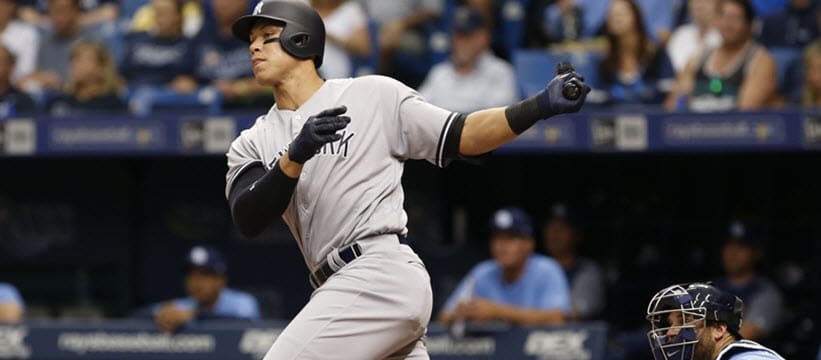This article is part of our MLB Barometer series.
We're 12 days into the 2020 MLB season, meaning we're anywhere between five and 17 percent of the way through the campaign, depending on whether your team has been lucky enough to avoid a coronavirus outbreak (or lucky enough to have not been scheduled against a team whose players elected to play despite knowing about their own outbreak). That means teams have played the equivalent of anywhere between eight and 27 games over a normal season, putting them anywhere between late March and late April on a normal schedule.
None of that is very helpful for informing exactly to what extent we should manage our teams as if it's truly early August and to what extent we should act as though it's still April. From a statistical perspective, we know next to nothing about whether a player's talent level has changed, so it's hard to adjust anyone's value outside of the most extreme cases. But we have had time to assess role changes on a number of teams, and we've unfortunately seen the anticipated high number of injuries, both of which lead to fairly straightforward changes in our assessments of players.
As was the case last week, this week's column will remain primarily focused on role changes, as it's still quite early to worry too much about small-sample statistics. The most extreme early performances have brought with them role changes already, however, as teams are just as anxious to avoid a slow start as fantasy players are. Other early performances
We're 12 days into the 2020 MLB season, meaning we're anywhere between five and 17 percent of the way through the campaign, depending on whether your team has been lucky enough to avoid a coronavirus outbreak (or lucky enough to have not been scheduled against a team whose players elected to play despite knowing about their own outbreak). That means teams have played the equivalent of anywhere between eight and 27 games over a normal season, putting them anywhere between late March and late April on a normal schedule.
None of that is very helpful for informing exactly to what extent we should manage our teams as if it's truly early August and to what extent we should act as though it's still April. From a statistical perspective, we know next to nothing about whether a player's talent level has changed, so it's hard to adjust anyone's value outside of the most extreme cases. But we have had time to assess role changes on a number of teams, and we've unfortunately seen the anticipated high number of injuries, both of which lead to fairly straightforward changes in our assessments of players.
As was the case last week, this week's column will remain primarily focused on role changes, as it's still quite early to worry too much about small-sample statistics. The most extreme early performances have brought with them role changes already, however, as teams are just as anxious to avoid a slow start as fantasy players are. Other early performances are worth mentioning if they're linked to good or poor health, or if they hint at skill changes.
RISERS
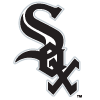 Luis Robert, OF, White Sox: Robert generated plenty of offseason hype, drafted at an NFBC ADP of 81.6, quite a high number given that he'd yet to make his big-league debut and had played just 47 Triple-A games. Many experts preached caution, expressing doubts about his ability to contribute right away, citing things such as his poor combination of a 23.4 percent strikeout rate and a 5.1 percent walk rate in the minors as potential cause for concern. He's certainly looked like he belongs in the early going this season, however, hitting .351 with two homers and a steal through his first nine games. Small-sample caveats do, of course, apply, but Robert isn't listed here purely for his early season success. He's also seen a role change, moving up to the leadoff spot with Tim Anderson out with a groin strain, which would boost his value even if he'd been struggling early.
Luis Robert, OF, White Sox: Robert generated plenty of offseason hype, drafted at an NFBC ADP of 81.6, quite a high number given that he'd yet to make his big-league debut and had played just 47 Triple-A games. Many experts preached caution, expressing doubts about his ability to contribute right away, citing things such as his poor combination of a 23.4 percent strikeout rate and a 5.1 percent walk rate in the minors as potential cause for concern. He's certainly looked like he belongs in the early going this season, however, hitting .351 with two homers and a steal through his first nine games. Small-sample caveats do, of course, apply, but Robert isn't listed here purely for his early season success. He's also seen a role change, moving up to the leadoff spot with Tim Anderson out with a groin strain, which would boost his value even if he'd been struggling early.
 Aaron Judge, OF, Yankees: Few players had a rockier start to 2020 than Judge, whose availability for the start of the season had remained uncertain since all the way back at the start of spring training. He showed up to camp dealing with what was originally thought to be a shoulder issue, then a pectoral issue, before it was finally discovered that he had a stress fracture in his rib and would need to be shut down for an unspecified period and might need surgery. He wound up avoiding surgery, and the delayed season gave him the time to rest up and heal that he needed, though it still wasn't clear even partway through summer camp, especially after he missed brief time with neck stiffness. You sure wouldn't be able to tell that there were any doubts about his health by looking at his numbers this season, as he leads the league in homers with six in his first eight games. While small-sample caveats apply here as well, Judge's excellent start serves as conclusive proof of his health, and anyone who got him at an injury-related discount is likely quite happy at the moment.
Aaron Judge, OF, Yankees: Few players had a rockier start to 2020 than Judge, whose availability for the start of the season had remained uncertain since all the way back at the start of spring training. He showed up to camp dealing with what was originally thought to be a shoulder issue, then a pectoral issue, before it was finally discovered that he had a stress fracture in his rib and would need to be shut down for an unspecified period and might need surgery. He wound up avoiding surgery, and the delayed season gave him the time to rest up and heal that he needed, though it still wasn't clear even partway through summer camp, especially after he missed brief time with neck stiffness. You sure wouldn't be able to tell that there were any doubts about his health by looking at his numbers this season, as he leads the league in homers with six in his first eight games. While small-sample caveats apply here as well, Judge's excellent start serves as conclusive proof of his health, and anyone who got him at an injury-related discount is likely quite happy at the moment.
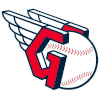 Shane Bieber, SP, Indians: Bieber is the only player listed as a "riser" based purely on small-sample numbers, but how can I not mention what he's done this season? Does it even count as an overreaction when a guy has a 54 percent strikeout rate and a two percent walk rate to back up his 0.00 ERA through his first two starts? You could potentially ignore his first dominant outing of the season against the lowly Royals, in which he struck out 14 batters, but he followed that by striking 13 in his next outing against the Twins, the team that finished second in scoring last season while setting the all-time single-season homer record. While some expressed doubts about Bieber this offseason due to the high hard-hit rate batters managed against him, it's not clear how worried we should be about that given how rarely he allows them to make contact. It wouldn't surprise me at all if he finishes the year as the highest-earning pitcher, especially given that Cleveland plays a full third of its games against the royals and Tigers.
Shane Bieber, SP, Indians: Bieber is the only player listed as a "riser" based purely on small-sample numbers, but how can I not mention what he's done this season? Does it even count as an overreaction when a guy has a 54 percent strikeout rate and a two percent walk rate to back up his 0.00 ERA through his first two starts? You could potentially ignore his first dominant outing of the season against the lowly Royals, in which he struck out 14 batters, but he followed that by striking 13 in his next outing against the Twins, the team that finished second in scoring last season while setting the all-time single-season homer record. While some expressed doubts about Bieber this offseason due to the high hard-hit rate batters managed against him, it's not clear how worried we should be about that given how rarely he allows them to make contact. It wouldn't surprise me at all if he finishes the year as the highest-earning pitcher, especially given that Cleveland plays a full third of its games against the royals and Tigers.
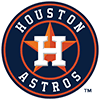 Cristian Javier, SP, Astros: A glance at the Astros' depth chart reveals a full 10 pitchers crossed off due to injury, just 10 days after the team opened its season. Anyone with a functioning arm and experience above the High-A level is a riser in Houston at the moment, and even that doesn't seem to be a requirement, as Nivaldo Rodriguez made the jump all the way from High-A. Javier is the one the Astros trusted with the first start in Justin Verlander's (forearm) absence, and his first MLB start hardly could have gone better, as he held an excellent Dodgers lineup to just a single one on two hits and a walk while striking out eight in 5.2 innings. He certainly comes with plenty of upside, as he posted a 1.74 ERA and a 37.3 percent strikeout rate in 113.2 innings across the three highest levels of the minors last season, though that came with a 12.9 percent walk rate. There's no guarantee that his next handful of starts will go as well, but it seems relatively guaranteed that he'll at least get the chance to prove himself, as neither Verlander nor Austin Pruitt (elbow) nor Jose Urquidy (undisclosed) will start any time soon.
Cristian Javier, SP, Astros: A glance at the Astros' depth chart reveals a full 10 pitchers crossed off due to injury, just 10 days after the team opened its season. Anyone with a functioning arm and experience above the High-A level is a riser in Houston at the moment, and even that doesn't seem to be a requirement, as Nivaldo Rodriguez made the jump all the way from High-A. Javier is the one the Astros trusted with the first start in Justin Verlander's (forearm) absence, and his first MLB start hardly could have gone better, as he held an excellent Dodgers lineup to just a single one on two hits and a walk while striking out eight in 5.2 innings. He certainly comes with plenty of upside, as he posted a 1.74 ERA and a 37.3 percent strikeout rate in 113.2 innings across the three highest levels of the minors last season, though that came with a 12.9 percent walk rate. There's no guarantee that his next handful of starts will go as well, but it seems relatively guaranteed that he'll at least get the chance to prove himself, as neither Verlander nor Austin Pruitt (elbow) nor Jose Urquidy (undisclosed) will start any time soon.
 Ryan Pressly, RP, Astros: The aforementioned rash of injuries to the Astros pitching staff has left Pressly as the only non-rookie in the team's bullpen. He's not completely healthy himself, missing the first few days of the season with elbow soreness before dealing with a fingernail in his first outing of the season Saturday, but he appears to be good to go and is seemingly the team's closer by default after Roberto Osuna hit the injured list Sunday due to right arm soreness. Pressly is clearly closer material, as his 2.32 ERA last season was backed up by an excellent combination of a 34.1 percent strikeout rate, a 5.7 percent walk rate and a 50.8 percent groundball rate. None of the other 12 qualified relievers with a strikeout-minus-walk rate of at least 28 percent had a groundball percentage that high, with only Taylor Rogers' 50.6 percent coming close.
Ryan Pressly, RP, Astros: The aforementioned rash of injuries to the Astros pitching staff has left Pressly as the only non-rookie in the team's bullpen. He's not completely healthy himself, missing the first few days of the season with elbow soreness before dealing with a fingernail in his first outing of the season Saturday, but he appears to be good to go and is seemingly the team's closer by default after Roberto Osuna hit the injured list Sunday due to right arm soreness. Pressly is clearly closer material, as his 2.32 ERA last season was backed up by an excellent combination of a 34.1 percent strikeout rate, a 5.7 percent walk rate and a 50.8 percent groundball rate. None of the other 12 qualified relievers with a strikeout-minus-walk rate of at least 28 percent had a groundball percentage that high, with only Taylor Rogers' 50.6 percent coming close.
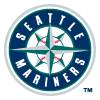 Yusei Kikuchi, SP, Mariners: Kikuchi wasn't close to the pitcher the Mariners thought they acquired in his debut season last year, striking out just 16.1 percent of batters en route to a 5.46 ERA. He generated a bit of sleeper buzz during draft season this year, however, as a trip to Driveline Baseball had reportedly helped him increase his velocity. Through two starts, the hype seems justified, as his fastball has jumped a full three ticks, sitting at 95.5 mph after coming in at 92.5 mph last year. While his ERA has only fallen to a mediocre 4.66, a .400 BABIP is undoubtedly part of the reason for his struggles. He's more than doubled his strikeout rate, which has jumped all the way to 34.2 percent. It's still far too early to say that he's definitely in for a stronger sophomore season, especially as his 13.2 percent walk rate is certainly a worry, but that dramatic jump in velocity is exactly the sort of thing that sometimes leads to a dramatic jump in performance, so he's worth taking a flyer on in most formats.
Yusei Kikuchi, SP, Mariners: Kikuchi wasn't close to the pitcher the Mariners thought they acquired in his debut season last year, striking out just 16.1 percent of batters en route to a 5.46 ERA. He generated a bit of sleeper buzz during draft season this year, however, as a trip to Driveline Baseball had reportedly helped him increase his velocity. Through two starts, the hype seems justified, as his fastball has jumped a full three ticks, sitting at 95.5 mph after coming in at 92.5 mph last year. While his ERA has only fallen to a mediocre 4.66, a .400 BABIP is undoubtedly part of the reason for his struggles. He's more than doubled his strikeout rate, which has jumped all the way to 34.2 percent. It's still far too early to say that he's definitely in for a stronger sophomore season, especially as his 13.2 percent walk rate is certainly a worry, but that dramatic jump in velocity is exactly the sort of thing that sometimes leads to a dramatic jump in performance, so he's worth taking a flyer on in most formats.
FALLERS
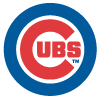 Craig Kimbrel, RP, Cubs: While Kimbrel recorded some of the best reliever seasons of all time in the early part of the last decade and had posted an ERA north of 2.75 just once in his first nine seasons, fantasy players were understandably nervous about him heading into this year coming off a 2019 campaign in which he struggled to a 6.53 ERA. He was taken as the 12th reliever off the board in NFBC drafts, finishing with an ADP of 148.7. He's only made two appearances this season, but it already looks as though we collectively weren't nearly pessimistic enough, as manager David Ross is already talking about removing him from the closing role. It would be hard to argue with that decision, as he's allowed four runs and walked four batters while recording just four outs, none of which were strikeouts. While Kimbrel hasn't formally lost the job just yet, it was Rowan Wick who got the save Saturday.
Craig Kimbrel, RP, Cubs: While Kimbrel recorded some of the best reliever seasons of all time in the early part of the last decade and had posted an ERA north of 2.75 just once in his first nine seasons, fantasy players were understandably nervous about him heading into this year coming off a 2019 campaign in which he struggled to a 6.53 ERA. He was taken as the 12th reliever off the board in NFBC drafts, finishing with an ADP of 148.7. He's only made two appearances this season, but it already looks as though we collectively weren't nearly pessimistic enough, as manager David Ross is already talking about removing him from the closing role. It would be hard to argue with that decision, as he's allowed four runs and walked four batters while recording just four outs, none of which were strikeouts. While Kimbrel hasn't formally lost the job just yet, it was Rowan Wick who got the save Saturday.
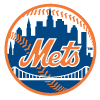 Edwin Diaz, RP, Mets: Diaz is next up on the lists of closers for whom we definitely could have seen this coming. Diaz was trusted more than Kimbrel was this draft season, going as the eighth reliever off the board with an NFBC ADP of 124.6, but those who faded him based on his 5.59 ERA last year are already looking fairly smart. While he did record a save in his first outing of the year, he's since allowed a run in his next two appearances, and the Mets are already talking about removing him from the role. As with Kimbrel, that's yet to formally happen, but the fact that the Mets are already publicly having those discussions so soon in the year following his rocky 2019 campaign certainly isn't a good sign. Seth Lugo, Jeurys Familia or Dellin Betances could find himself in a ninth-inning role in the near future.
Edwin Diaz, RP, Mets: Diaz is next up on the lists of closers for whom we definitely could have seen this coming. Diaz was trusted more than Kimbrel was this draft season, going as the eighth reliever off the board with an NFBC ADP of 124.6, but those who faded him based on his 5.59 ERA last year are already looking fairly smart. While he did record a save in his first outing of the year, he's since allowed a run in his next two appearances, and the Mets are already talking about removing him from the role. As with Kimbrel, that's yet to formally happen, but the fact that the Mets are already publicly having those discussions so soon in the year following his rocky 2019 campaign certainly isn't a good sign. Seth Lugo, Jeurys Familia or Dellin Betances could find himself in a ninth-inning role in the near future.
 Danny Santana, 1B/OF, Rangers: Santana hit the injured list with a strained right forearm Sunday and will be out until at least next weekend and potentially longer. He clearly wasn't right to begin the year, grabbing just one hit in his first 17 at-bats while striking out eight times. What to do with him next is the question that now faces those who drafted him, at least in leagues without a fair number of injured list spots. In deeper leagues, 40 or so games of Santana could well be better than 50 games of whoever the best hitter on the wire is, but what about an undetermined amount of games of Santana which won't be more than 40 but could be significantly less? The decision is made even tougher by the fact that Santana was difficult to evaluate to begin with, as his strong 2019 campaign, in which he hit .283 with 28 homers and 21 steals, was his first good season since his debut back in 2014.
Danny Santana, 1B/OF, Rangers: Santana hit the injured list with a strained right forearm Sunday and will be out until at least next weekend and potentially longer. He clearly wasn't right to begin the year, grabbing just one hit in his first 17 at-bats while striking out eight times. What to do with him next is the question that now faces those who drafted him, at least in leagues without a fair number of injured list spots. In deeper leagues, 40 or so games of Santana could well be better than 50 games of whoever the best hitter on the wire is, but what about an undetermined amount of games of Santana which won't be more than 40 but could be significantly less? The decision is made even tougher by the fact that Santana was difficult to evaluate to begin with, as his strong 2019 campaign, in which he hit .283 with 28 homers and 21 steals, was his first good season since his debut back in 2014.
 Everyone, Cardinals: The most difficult and unpleasant part of playing season-long fantasy baseball this season is figuring out just how many games the coronavirus pandemic will allow your team to play. We had as many as six teams sitting at times during the last week as they either had experienced an outbreak, had just played against a team that had experienced an outbreak or were scheduled to play against a team in one of the aforementioned categories. The Cardinals are the latest team to experience what appears to be the start of an outbreak, with at least three players testing positive last week and more positive tests to follow. As of writing, the Cardinals are expected to take on the Tigers in Detroit on Tuesday and have seven games (including a doubleheader) on the schedule, but with the rate that games have been getting postponed, it's hard to have anything close to 100 percent certainty that will wind up happening, and it's therefore quite a difficult decision to play any Cardinals this week.
Everyone, Cardinals: The most difficult and unpleasant part of playing season-long fantasy baseball this season is figuring out just how many games the coronavirus pandemic will allow your team to play. We had as many as six teams sitting at times during the last week as they either had experienced an outbreak, had just played against a team that had experienced an outbreak or were scheduled to play against a team in one of the aforementioned categories. The Cardinals are the latest team to experience what appears to be the start of an outbreak, with at least three players testing positive last week and more positive tests to follow. As of writing, the Cardinals are expected to take on the Tigers in Detroit on Tuesday and have seven games (including a doubleheader) on the schedule, but with the rate that games have been getting postponed, it's hard to have anything close to 100 percent certainty that will wind up happening, and it's therefore quite a difficult decision to play any Cardinals this week.

